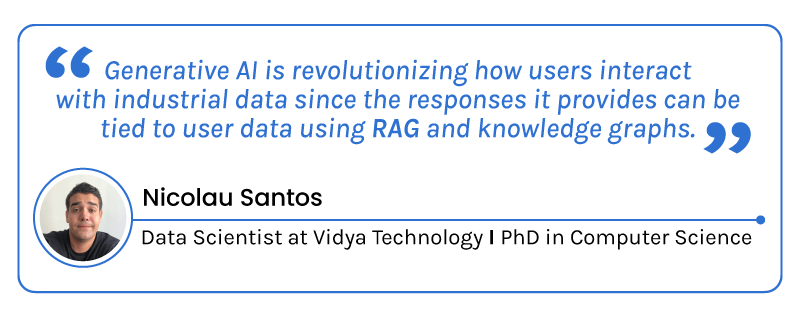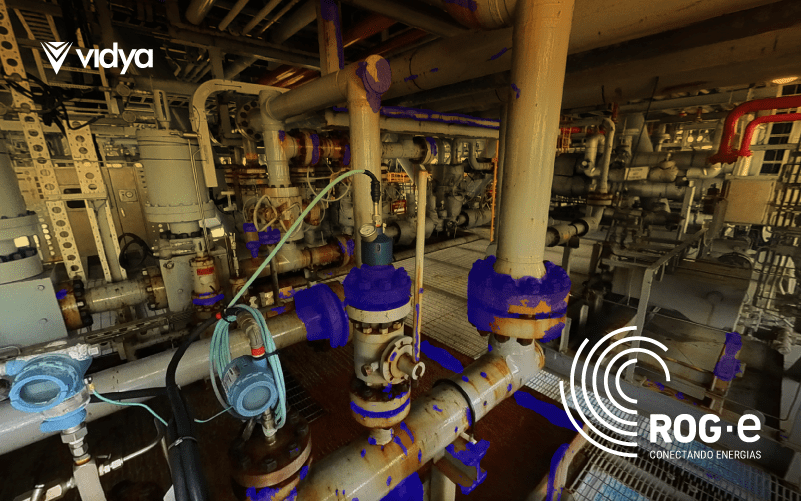Generative AI marks a groundbreaking milestone in the evolution of artificial intelligence, not just in its capabilities but in its reach and impact. While it may not be the single most important development in AI’s history, it has certainly captured the public’s attention like no other. Now, businesses of all sizes, across industries, can harness AI’s power without needing a team of data scientists or advanced technical knowledge.
According to Statista, the Generative AI market, which was just over $23 billion in 2022, surged to nearly $45 billion by the end of 2023. This rapid growth, averaging about $20 billion annually, is set to continue, with the market expected to expand significantly through 2030.
Indeed, this algorithmic model has democratized access to powerful artificial intelligence, bringing new opportunities for industries like oil and gas. For instance, operations can approach key challenges such as data management, predictive maintenance, and risk management with technology-based, data-driven insights provided by AI. Still, before exploring how it can impact industries, what exactly defines Generative AI?

What is Generative AI?
GenAI is a branch of artificial intelligence that produces content of its own by learning from vast datasets and recognizing intricate patterns. One of its standout features is the ability to engage in dynamic question-answer interactions, where it can generate coherent, contextually relevant responses to user queries. Also, well-known tools such as OpenAI’s chatGPT and Google’s Gemini are examples of generative AIs.

These AI models use machine learning techniques, particularly deep learning, to learn from large datasets and then generate similar data. By learning from these datasets, they can recognize complex patterns and structures, enabling them to create new, original content that mirrors the data they were trained on. According to the article ‘’Enhancing Work Productivity through Generative Artificial Intelligence: A Comprehensive Literature Review’’, Generative AI has presented a unique approach for industries to address productivity challenges within organizational frameworks. But how does GenAI accomplish this?
How does it work?
Generative AI alongside semantic technologies can generate coherent and relevant responses and facilitate data findings. However, these tools don’t just connect humans to hard-to-reach information, they make data easier to explore, understand, and use. In these conditions, key stages such as model training, neural networks, content generation, and feedback mechanisms all contribute to the system’s ability to learn, adapt, and generate meaningful outputs.

1. Model Training
In this first phase, the AI is fed with vast datasets that help it learn the patterns, structures, and relationships within the data. Certainly, the more diverse and comprehensive the data, the better the AI becomes at recognizing subtle nuances. According to IBM, during this phase, the algorithm performs and evaluates millions of ‘fill in the blank’ exercises, trying to predict the next element in a sequence and continually adjusting itself to minimize the difference between its predictions and the actual data. For instance, the AI might be trained on historical equipment data or performance logs in the industrial sector.
This step is conducted through Deep Neural Networks, layers of interconnected nodes (or “neurons”) that extract different features or patterns from the data. In this context, the structure of a neural network allows it to capture both simple and complex patterns within the data, gradually building a hierarchy of features through successive layers.
2. Fine-tuning
After an initial training phase where the model learns from large, general datasets, it can be tuned on more focused, domain-specific data to increase its accuracy and relevance. In this manner, fine-tuning consists of adjusting the connections between the neural networks, helping the model better recognize patterns relevant to a new task.
For example, in a language model, earlier layers might identify basic word relationships, while deeper layers understand complex grammar and context. This multi-layered approach allows the AI to build a detailed understanding of complex data, enabling it to handle more complex tasks. According to Google Cloud, model tuning is an effective way to customize large models by increasing model robustness and lowering inference latency due to shorter prompts.
3. Generation
Afterward, the model generates new content that mimics the patterns it has learned previously, representing its ability to “create.” This content could be text, images, predictions, or simulations, depending on the model’s purpose. For example, a generative AI model might generate predictive maintenance schedules based on historical equipment performance data, and risk assessment recommendations, or simulate corrosion behavior in the industrial sector. The key here is that the AI doesn’t just replicate existing data; it creates new outputs that align with the underlying patterns it has learned.
4. Feedback
Finally, after the model generates content, its performance is evaluated against predefined metrics or real-world outcomes. This evaluation helps identify areas where the model’s predictions or generated content might be lacking. For example, in the oil and gas industry, feedback could involve assessing the accuracy of predictive maintenance schedules against actual equipment failures or validating risk assessment recommendations through operational outcomes.
How can the Industrial Sector benefit from GenAI?

The Journal of Petroleum Technology reported that 80% of employee time in the offshore industry is spent looking through unstructured data to inform decisions. For this purpose, Generative AI can significantly spare time by instantly finding and presenting relevant information. Instead of manually searching through vast amounts of data or searching across multiple sources, users can simply input their queries into a GenAI tool, which quickly processes and synthesizes information from diverse datasets.
This capability extends beyond mere text generation—GenAI can enhance various aspects of operations within the industrial sector. For instance, it can predict potential failures before they occur by analyzing equipment historical data. Additionally, GenAI can assist in process safety and risk management by simulating various scenarios and outcomes by crossing risk assessments such as HAZID, HAZOPS, and PRAs.
In these conditions, Generative AI is changing how professionals retrieve data by making it more accessible and actionable. This is achieved using techniques like Retrieval-Augmented Generation (RAG) and knowledge graphs:
- RAG (Retrieval-Augmented Generation): It enhances the AI’s responses by combining real-time data retrieval with generative models. Thus, instead of relying solely on pre-trained information, the AI can pull in the latest and most relevant data from external sources, such as databases or documents.
- Knowledge Graphs: These are structured representations of information that show relationships between different data points. In the industrial context, a knowledge graph can map the connections between equipment, processes, degradation, and performance metrics. When integrated into Generative AI, professionals can ask complex questions about operations, and the AI can use the knowledge graph to provide detailed, context-aware responses.

Essentially, this tool can provide actionable insights more quickly than traditional methods. This not only improves decision-making speed but also enhances accuracy by uncovering patterns and correlations that might be missed by human analysis. Overall, the integration of Generative AI into the industrial sector promises significant improvements in operational efficiency, safety, and cost-effectiveness.
Conclusion
Generative AI might be the greatest symbol of this new digital era. By delivering accurate, contextually relevant insights in seconds, these models save valuable time for operations, allowing them to focus on higher-level strategic tasks rather than devoting time to data retrieval. As the industrial sector continues to adapt to the demands of the digital age, Generative AI stands out as a crucial tool in their arsenal—one that not only embodies the spirit of innovation but also drives it forward.



